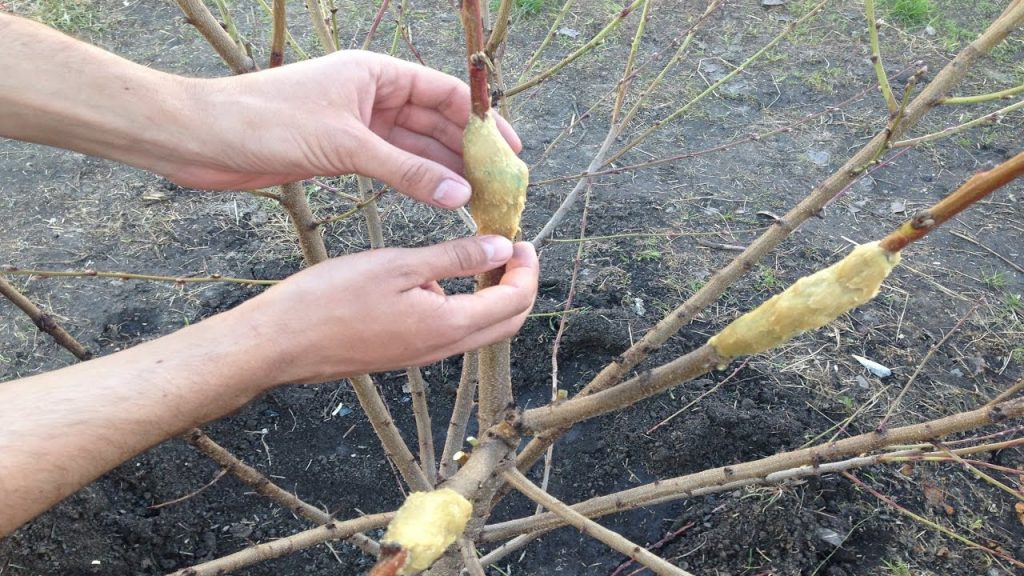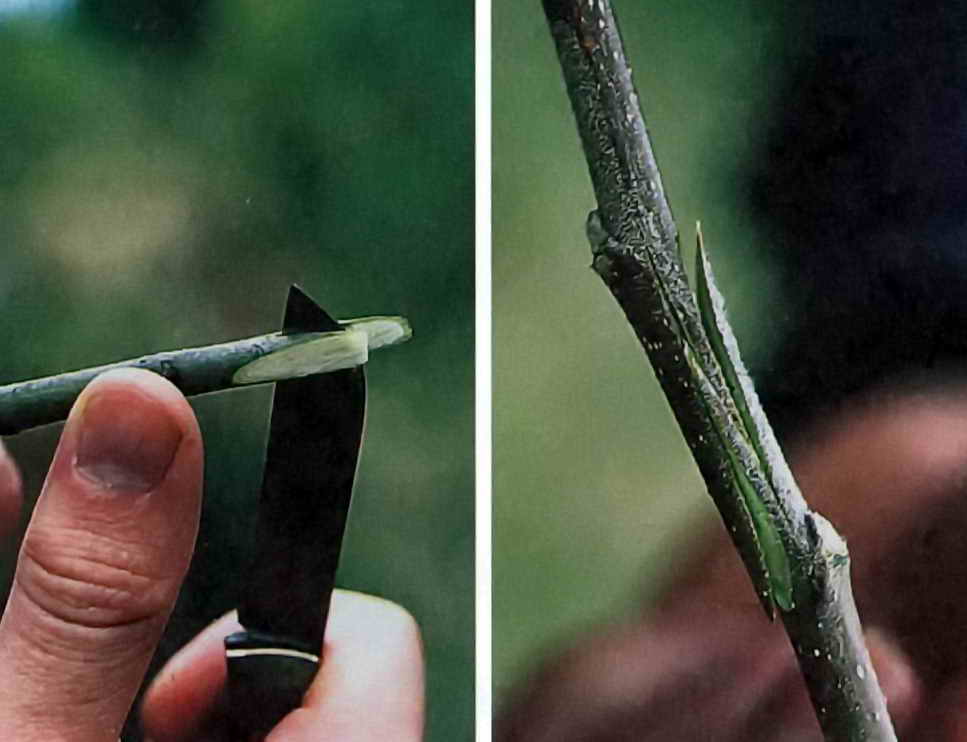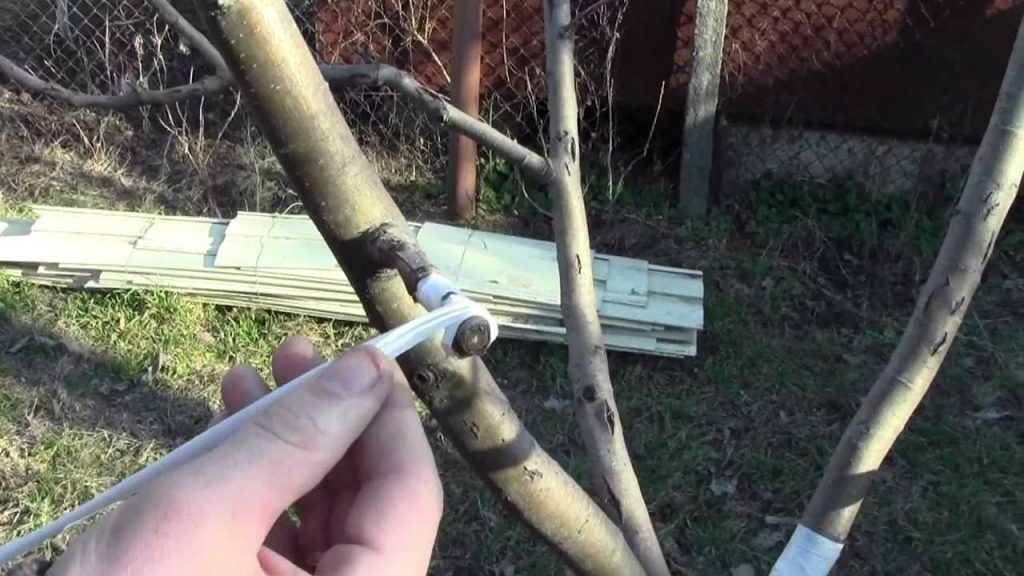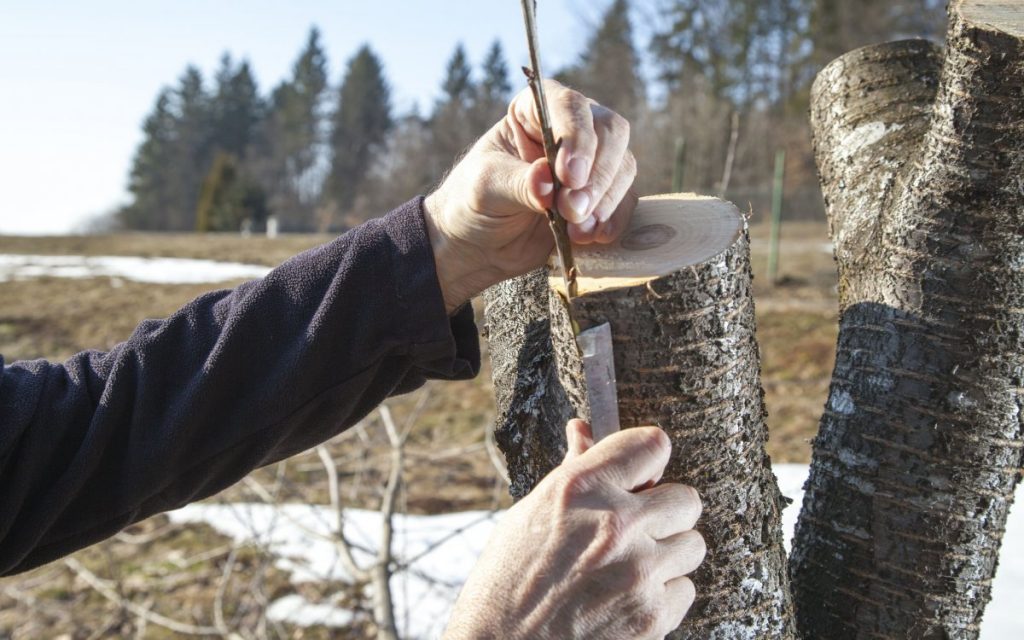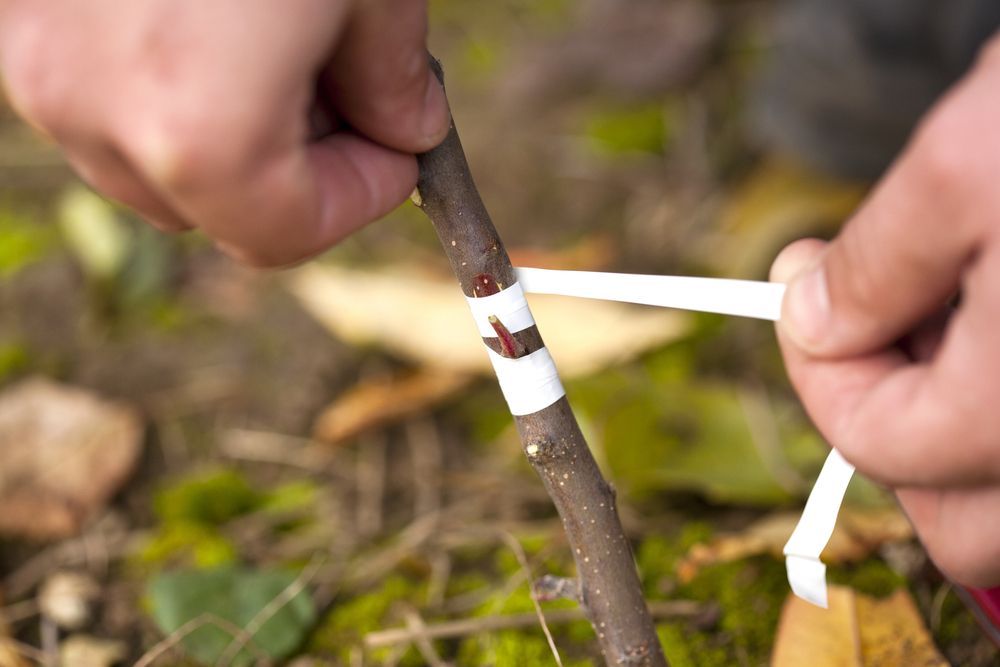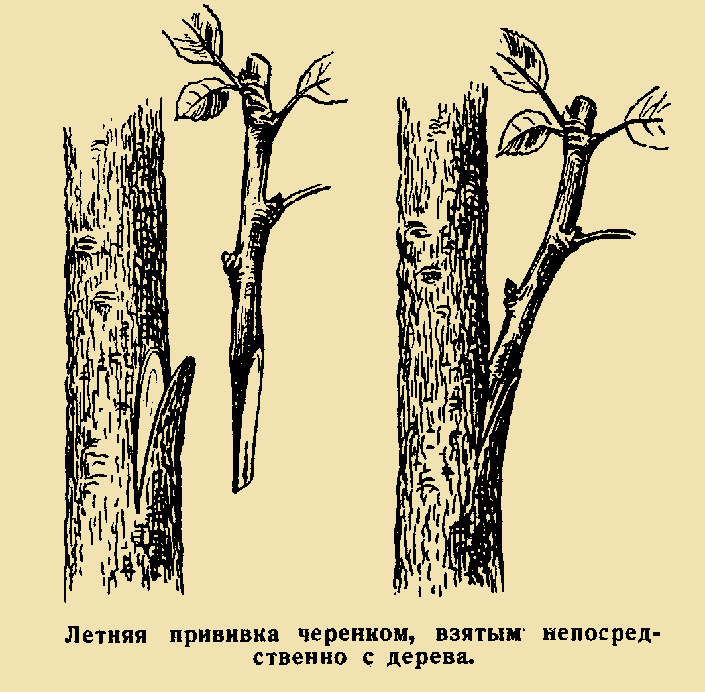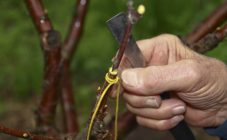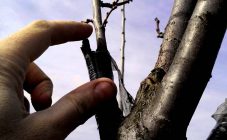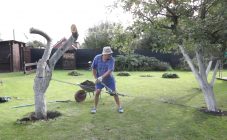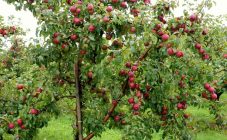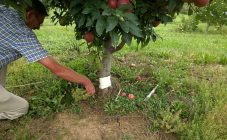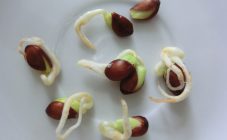Content:
Many gardeners, especially beginners, are faced with the question of how to effectively plant an apple tree. After all, there are a huge number of types of vaccinations, and there are also certain features in carrying out this procedure in different periods of the year. Before daring to take such a step, it is important to know how to plant an apple tree correctly.
Why vaccination is needed
Before you start choosing the method and time of vaccination, you should clearly understand for what purpose it is carried out. There are several reasons why the apple tree should be vaccinated:
- If the apple trees on the site began to bring a weak harvest, then it can be significantly increased by replacing the old crown with a new and more fruitful one.
- You can graft a tree for the purpose of a simple experiment, in order to try to grow two different varieties at once on the same tree.
- To save space on the site, it is also advisable to vaccinate. This will help to grow two varieties at once on one tree.
- If a decision is made to independently obtain a seedling, then you can subsequently refine the game with a good scion.
- If the tree is damaged for any reason (for example, eaten by rodents), then it can be renewed by grafting.
- Apple varieties that are afraid of frost can be grafted with more frost-resistant species so that they do not die in the harsh winter climate.
- Thanks to grafting, you can grow a dwarf apple tree.
Types of vaccinations
There are many methods that can be used when doing apple grafting. Each of them has its own unique moments, which influence the choice in a particular situation. Before choosing your option, you need to know how to plant apple trees in any of the ways.
Grafting into cleft
This method of grafting should be practiced during the dormant period of the tree. The best period will be late March and early April. It will not be possible to complete the procedure alone. A second person will help make longitudinal cuts in the tree, as well as insert the graft.
Among the main features of grafting into a split, the following points should be highlighted, which will help you understand how to graft an apple tree step by step in spring:
- In places where the saw was carried out, a neat cleaning is carried out. In the middle of the cut, insert a hatchet or secateurs. The length of the split should be about 10 cm.The slot is bred to the sides and the scion is inserted directly.
- In order for the vaccination to end successfully, it is necessary to ensure that the drawing of the parts being composed matches as closely as possible.
- On the thickest knots, it is allowed to make about 4 notches and add 4 grafts to the tree at the same time. After the manipulations are completed, all joints are poured over with garden varnish.
- If the stalk is not held too tightly and tightly, then you should take the rope and wrap the graft site. If the scion is about 3 cm, then the garden var is allowed not to be used, but wrapped with polyethylene. The film is fixed to the stump.
To carry out such an inoculation, cuttings should be taken in 4 buds.
Semi-cleavage grafting
Thin branches are also suitable for the procedure, since the depth of the split will be about 3 cm. The preparation scheme is similar to the “split” option. The graft is fixed so that the cut sections coincide. The tree is wrapped very tightly with polyethylene and fixed with twine. It is more advisable to use this type in the spring, before the buds begin to swell.
Corner notch method
For such a procedure, it is advisable to use young branches up to 2 cm. They are cut using a sharp knife; an angular notch is made at the cut site. After a couple of centimeters, another notch is cut with an angle of inclination of 30 degrees and a depth of about 5 cm.On the opposite side, the slots are made in the same way.
From the bottom, the cutting is cut from two sides. If the cuts are made properly, the scion will fit perfectly into the cut on the rootstock. The surgical site is protected with plastic wrap. It is best to also perform this type of vaccination even before the start of self-movement.
Grafting under the bark
The best period for performing such a procedure is considered to be the growing season at the very beginning, at which time the bark easily peels off the wood. First, you need to cut off branches and make cuts in the bark. A stalk is inserted into them, then the joint, which resembles a small bridge, is fixed with polyethylene.
To graft faster, cuttings can be prepared a little earlier, but they should be stored wrapped in a damp cloth to prevent the cuts from drying out.
Copulation
A similar method is used if the scion and rootstock are of the same diameter (up to 2 cm). To perform a similar look, you should make the same slanting cuts so that there are no knots and burrs (length - up to 4 cm).
The prepared parts are connected so that the cambium of the scion and rootstock coincides as much as possible. The upper cut is treated with garden pitch, and at the junction, a polyethylene strapping is performed.
Improved copulation
This method is increasingly being used instead of traditional copulation. The connection is much stronger. To perform such a grafting, the following sequence of actions is used:
- From the bottom of the cutting, a cut is made from top to bottom with a sharp knife so that a "heel" (a small piece of bark) remains.
- A similar action is performed on the stock.
- The two parts are applied so that the tabs left are in close contact with each other.
- The shoot is lowered so that its cut completely coincides with the cut on the branch.
- The junction is wrapped in polyethylene and secured with twine. Sometimes it is advisable to use duct tape to secure it. The top cut is processed with garden varnish.
This grafting method should be done in the spring when the bark is easily detached from the wood.
Budding apple trees
A similar method is used for planting apple trees in the summer, for example, in August. To perform this procedure, you should take a sleeping kidney from a healthy cutting. From an apple tree, a shoot of one year is cut to 0.5 m.Choose one that has good wood, even bark and beautiful healthy leaves.
You can cook the cutting in advance, but it is immersed in water so that the juice does not evaporate. You should also pick off all the leaves.
In this case, the stock will be a young tree, the trunk of which is about 8 cm. Before the procedure, all branches are removed, and also thoroughly watered. The kidney is inserted into a T-shaped cut or into the butt. The junction is wrapped in polyethylene.
When is it better to graft apple trees
In principle, you can graft apple trees throughout the year. Still, the best periods are late summer (early autumn) and spring. The specifics of each season should be noted in more detail.
Grafting in spring
As experienced gardeners note, the spring period is most favorable for grafting procedures, since at the beginning of sap flow, the grafting takes root well. Different types of vaccinations are carried out at different times:
- the use of cuttings is relevant after the end of spring frosts (late March - early April);
- apple budding begins in late April or early May.
Grafting in the fall
In general, autumn is not the best time to perform such a procedure, but if the temperature is warm enough outside, then you can graft the tree in September.
During this period, the following methods are allowed:
- budding an apple tree with an "eye";
- into cleavage;
- in the butt;
- for the bark.
Grafting an apple tree in spring
Spring grafting can be performed in various ways: by copulation, in a split, by budding, in a lateral incision, behind the bark. How to plant an apple tree in spring step by step for each technology was discussed earlier.
For any of their options, the grafting material is harvested in the fall or early February. Depending on the species, the sequence of actions will vary.
Grafting an apple tree in autumn
Autumn surgery is less common than spring surgery. Since it is difficult to predict the beginning of frost, this phenomenon is unpredictable. But sometimes there are situations when it is impossible to get cuttings of the desired variety in another period of the year, so there is no other way out. You should vaccinate about a month before setting the temperature outside to +5.
For vaccinations in the fall, you can use the following methods:
- after harvesting, until the fall of leaves, grafting can be carried out in any way of copulation;
- for peephole grafting, the best period is the end of August - the second half of September;
- bark grafting should be done in late summer, early September and early August.
What rootstocks can be used for apple trees
The ideal and familiar option for everyone is considered to be rootstocks from cultivated varieties of apple trees or adult trees. But grafting can also be carried out on a "wild game" that has grown in the forest or sprouted independently from seeds.
Grafting to fruit trees
Not only apple trees can be grafted onto an apple tree. Sometimes alternative non-native grafts are used, and the result pleases the owner. For our area, there are several alternative options that you can use:
- hawthorn;
- red and black chokeberry;
- quince;
- viburnum;
- pear.
Grafts to barren trees
Experienced gardeners and not only have a separate interest in the implementation of apple grafts to wild barren trees, for example, to birch. In essence, birch will be a very good stock, as it is a weed among trees, grows well and quickly, does not get sick. Having a fruit tree with similar resilience characteristics is everyone's dream.
But as practice shows, such vaccinations are very difficult to vaccinate. In 70-80%, birch simply rejects the apple tree. It is for this reason that grafting on wild barren trees is not recommended.
Performing foreign vaccinations
When choosing foreign grafts, certain nuances are taken into account:
- Operations performed not according to the classic apple-on-apple tree are not as durable.
- The apple tree takes root on the chokeberry much worse than on the ordinary (red) one;
- By grafting an apple tree onto a mountain ash, you can increase its frost resistance, but you should be prepared for the fact that the fruits begin to shrink. A similar problem can happen with viburnum, hawthorn and quince.
- When grafting an apple tree on a quince, you should be prepared for the fact that the probability of survival is low, and the yield is very low.
- A pear takes root better if you take an apple tree for the scion, but on the contrary, the operation ends in luck less often, but the apples will be juicier and tastier.
Despite everything, inoculations with foreign cultures are performed quite often. This question is especially relevant if there is a desire, for example, to cut down an unnecessary mountain ash. The best methods of grafting on foreign rootstocks are:
- into cleavage;
- in the side cut;
- for the bark;
- improved copulation.
Features of summer vaccination
In the summer, the second sap flow occurs. It falls in late July - early August. In June, engraftment will be a little more difficult, but during this period a similar procedure can be performed. For this period, it is ideal to use the apple budding method. In the southern regions, this period falls on the end of August - beginning of September.
The main feature of the summer treatment is the use of fresh young green cuttings. Green cuttings must meet the following requirements:
- annual shoots longer than 30 cm;
- cuttings must be fully formed and healthy;
- the cut diameter should be about 5-6 cm;
- the material should be harvested from the south side.
For the summer operation, you should use fresh shoots that were harvested on the day of the procedure.
Caring for a grafted tree
After the operation, the condition of the tree is monitored. After a period of two weeks, it is worth checking whether the stalk has taken root, whether the kidney has dried up. If the "operation" fails, then everything is removed, and the cut is treated with garden varnish. You can try to plant the same tree again, but in summer or autumn.
When performing the operation in the autumn, even before the onset of a cold snap, the tree is well spud and watered so that it does not freeze out in winter frosts. It is also important to protect the site of the "operation" from the sun.
After awakening the tree, the formation of shoots on a new cuttings is examined. If they appeared from several kidneys, then only one remains, the rest are removed. When young cuttings reach a length of 25 cm, they are tied up. The second time is tied up when new cuttings are 40 cm long. This is done for 2-3 years, because the mechanical bond between the scion and the rootstock is not too strong.
As you can see, grafting a tree is a rather complicated and very responsible process, but if all the rules of this procedure are followed, there is a high probability of getting a good result.When choosing a period for such an operation, one should take into account the peculiarities of the local climate. For example, for the Urals, it is best to plant apple trees in spring and autumn. In the summer, you can also perform a similar procedure, but all the features and requirements should be observed.

